There’s something endlessly fascinating about the English Civil War, from the decisive battles, such as the victory of the Parliamentarian New Model Army at the Battle of Naseby on 14 June 1645, to the bloody sieges, flights, executions and birth of a constitution. Broadly speaking the period is divided into the first and second wars, between supporters of Charles I and the Long Parliament, and the third between supporters of Charles II and the Rump Parliament, brought to a close by Parliamentarian victory at the Battle of Worcester in the autumn of 1651.
Thankfully, there’s a vast quantity of digitised primary and secondary material out there to help you trace your family connections to the English Civil War.
1. Directory of Parliamentarian Army Officers
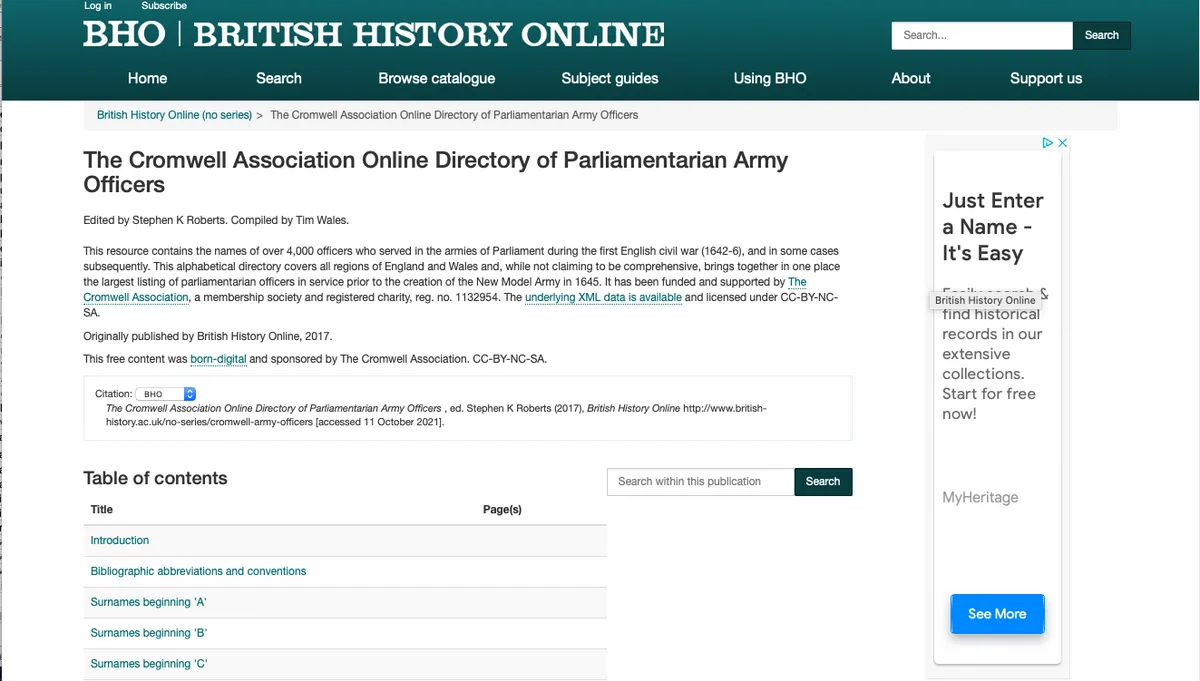
This simple A-to-Z directory of Parliamentarian officers was first published online in May 2017. The culmination of almost two decades’ work by members of the Cromwell Association, the directory boasts 4,000 names of officers who served in the armies of Parliament during the first English Civil War (prior to the creation of the New Model Army in 1645). The directory has strong coverage of officers, from cornets and ensigns to lieutenants, captain-lieutenants, captains, majors and lieutenant-colonels, up to the rank of colonel. Search British History Online’s parent catalogue for other material from the era, such as the full text of more than 900 pieces of legislation passed into law.
2. The National Archives
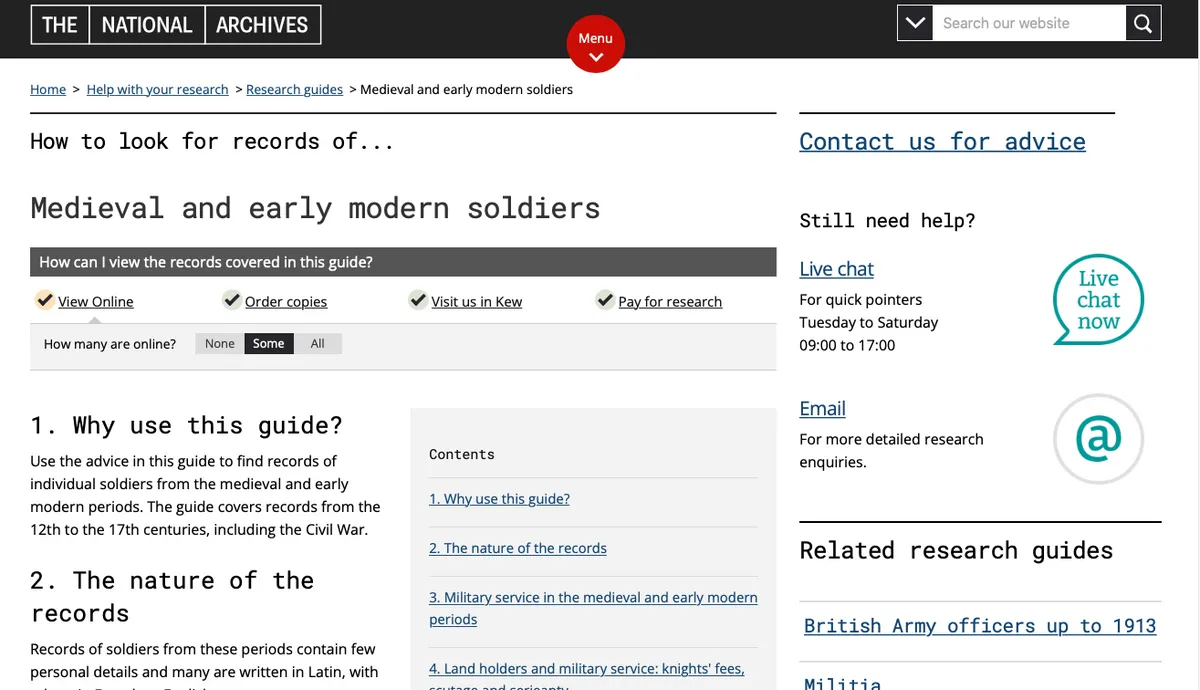
This guide from The National Archives (TNA) explains records back to the 12th century. The section on Civil War and Interregnum soldiers leads to catalogue descriptions for both Roundhead and Royalist forces, noting that there is very little material on rank and file soldiers. There are lots of entries describing TNA sources, although you may prefer to start with some of the published and printed volumes available here – such as Edward Peacock’s The Army Lists of the Roundheads and Cavaliers (1863), which you can download for free from the Internet Archive.
3. The Cromwell Association
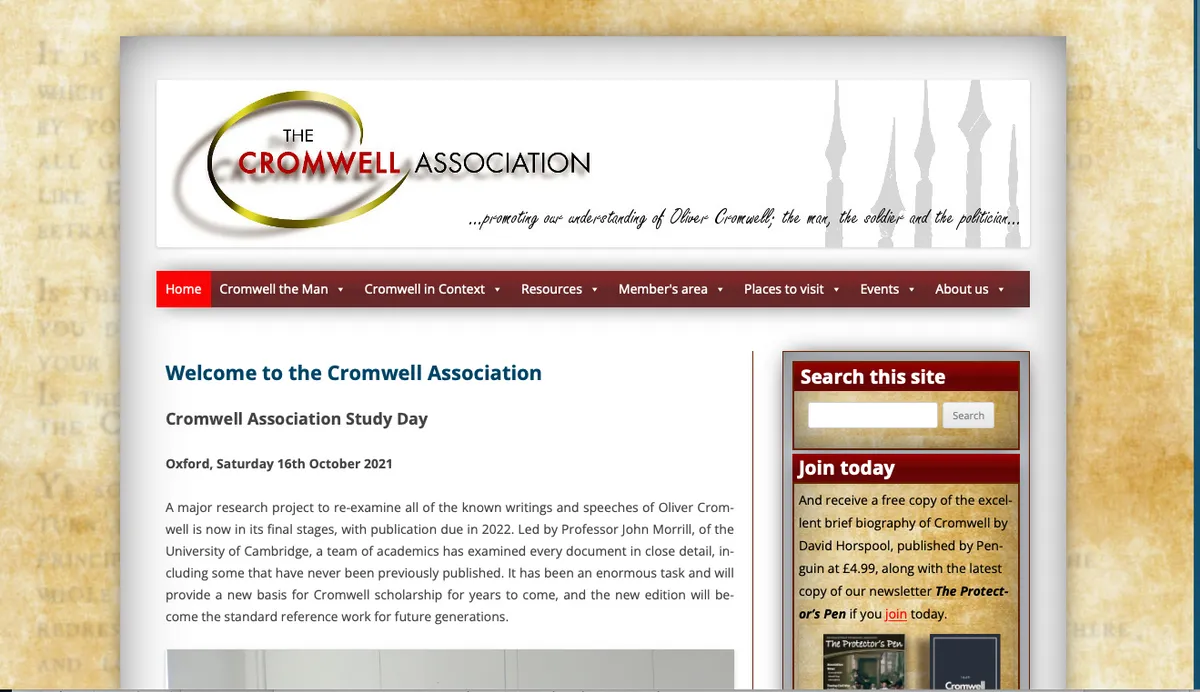
The Cromwell Association’s website is a useful hub of up-to-date information on the study of Cromwell and his forces, as well as a gateway to further resources. The site includes material about ‘Cromwell the Man’, detailing his early life, beliefs, family and genealogy, wealth, health and death, before ‘Cromwell in Context’ digs deeper into his life as a soldier, leader and politician. There are back issues of the association’s newsletter Protector’s Pen and journal Cromwelliana, plus useful reading lists, publications, links and details of the group’s own Cromwell Collection, located at Huntingdon Library and Archives (itself a short walk from the Cromwell Museum).
4. BCW Project
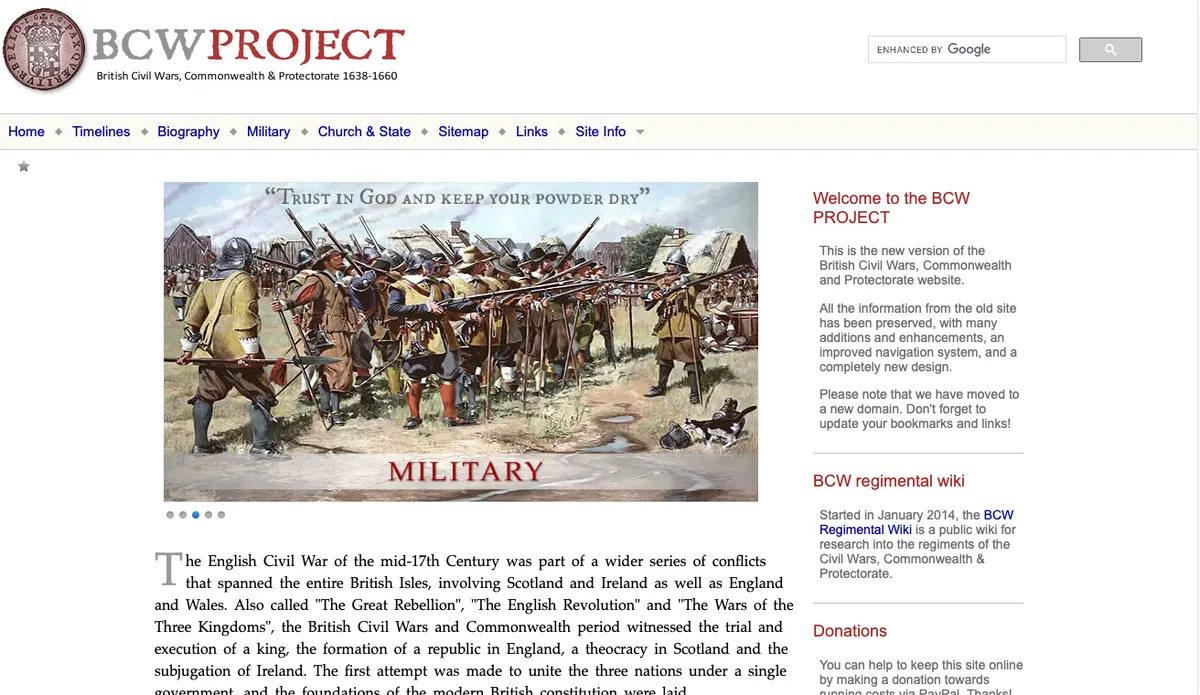
The new version of the British Civil Wars, Commonwealth and Protectorate website is arranged in “four interweaving threads” that bring together chronological events; a who’s who; military and naval history; and the Church and the state. There are pages and articles on the Putney Debates, the Levellers, the Fifth Monarchists and Venner’s Uprising, as well as material relating to military units, individual battles and more.
I recommend that you also visit the BCW Regimental Wiki - a vital tool if you’re struggling to get to grips with the structure of forces raised during the Civil Wars, Commonwealth and Protectorate.
5. National Civil War Centre

The National Civil War Centre opened in 2015 in Newark, Nottinghamshire, a key Royalist stronghold at the crossroads of the Great North Road and the Fosse Way. It was besieged more than once during the conflict – there’s a near perfect hole in the spire of St Mary Magdalene that was made by a 6lb Parliamentarian cannonball. Alongside details of these battles you can read about exhibitions, projects, events and objects preserved here – including a unique siege map of Newark on vellum from 1646, showing the earthworks of both the defenders and attackers together with the layout of the town at the time.
6. Expert’s Choice: Civil War Petitions
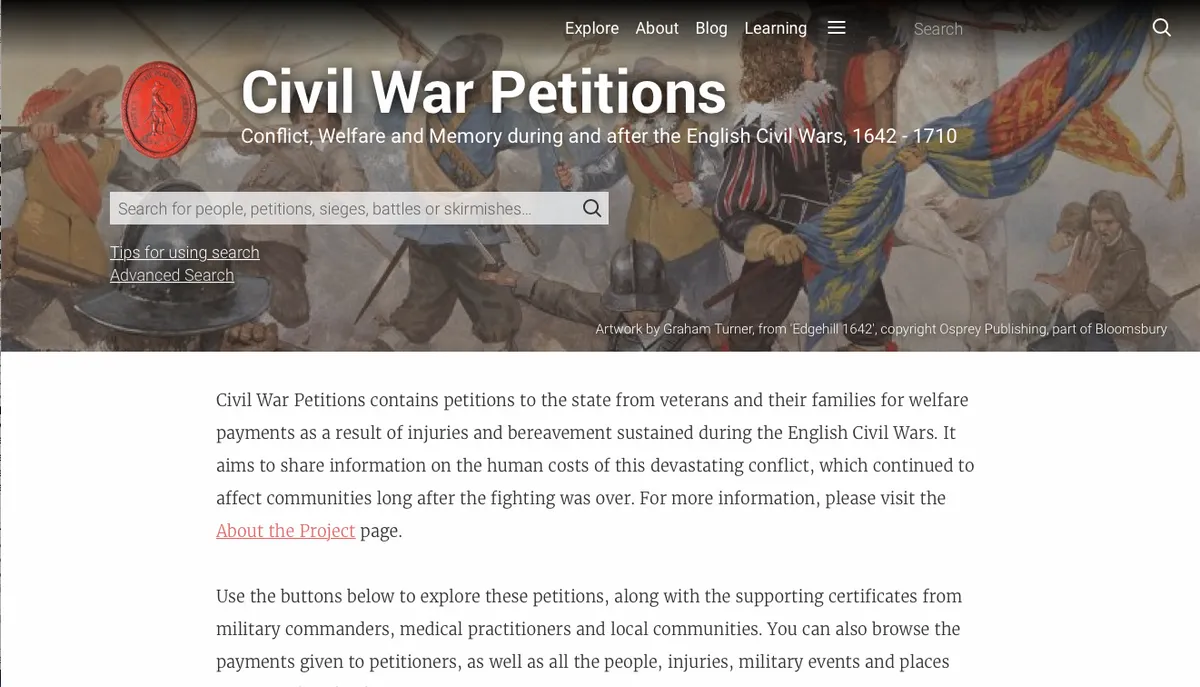
Chosen by James Hobson, author of The English Civil War: Fact and Fiction:
"'I, your humble petitioner, Anthony Davy in the Parish of Aston in the county of York, desires you
to accept this humble petition… beseech you to grant your poor petitioner, in his great distress
and poverty, some small tribute or relief…'
"There aren’t many searchable name databases for the common people in 17th century Britain, but Civil War Petitions is a unique and exciting resource, part of the academic project ‘Conflict, Welfare and Memory During and After the English Civil Wars, 1642–1710’. It is a collection of petitions from injured soldiers, their wives and their families, asking for help in the aftermath of the war, which resulted in more deaths per head of population than the First World War.
"Some petitions give the bare facts, but others tell harrowing stories of a war that was never romantic or glamorous. The website is also searchable by nature of injury; if you find an ancestor, you will also find out how they suffered, a rare privilege for the family historian! The accompanying set of blogs (which are also searchable) is an excellent social history of the period, and contains some interesting and diverse stories of individuals, both men and women, rich and poor."
Go further
7. The Cromwell Museum
Located in the former Huntingdon Grammar School building where Cromwell was educated, the collection comprises documents, portraits, clothing, miniatures, arms and armour.
8. The Hartlib Papers
This is the searchable online edition of 25,000 17th century manuscripts brought together by Samuel Hartlib (c1600–1662) in his quest to “record all human knowledge”.
9. The John Hampden Society
The society is dedicated to promoting the study of this 17th century Parliamentarian. Its website includes a family tree.
10. The Putney Debates
Visit the Online Library of Liberty to read the discussions between members of the New Model Army as they thrashed out a new constitution.
11. The Sealed Knot
This is one of the UK’s major re-enactment societies. Its site includes details of how to join, upcoming events and photos of past skirmishes.
12. Thomason’s Tracts
Learn about the British Library’s books, tracts, pamphlets and newspapers printed in 1640–1661 and collected by London bookseller George Thomason, although they are behind a paywall.
Jonathan Scott is the author of A Dictionary of Family History
